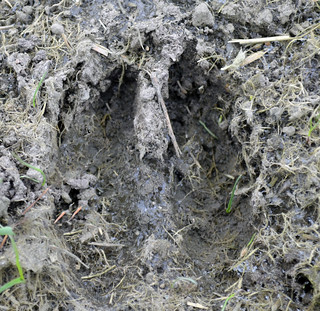
Where are they found?
White-tailed deer have a wide range–they are found from South America all the way north into southern Canada.
What do they eat?
White-tailed deer are herbivorous, meaning they do not eat meat–only plant foods. They can eat fairly diverse foods, from twigs to fungi to fruits.
How do they act?
White-tailed deer are grazers, and are fairly calm animals. They are crepuscular, meaning they are primarily active around dusk and dawn. They can also be active at night, which is called being nocturnal. Doe, or female deer, have a seven month gestation period and usually give birth in May or June to one two, or three fawns. Bucks, or male deer, use their antlers to fight other males for territory in mating season. These antlers fall off during the winter and grow back annually.
Are they endangered?
They are listed under “Least Concern” under the International Union of Conservation of Nature (IUCN) Red List of Threatened Species. In the past, in the United States, their populations have been depleted. Though, through stricter hunting management, their numbers have grown and been restored. According to the Kentucky Department of Fish and Wildlife Resources 2016-2017 White-tailed Deer Report, there has been a 4% population increase at the beginning of the 2017-18 hunting season compared to 2016-17.
Mammal Moment
White-tailed deer can jump as high as 10 feet in the air, cover 30 feet with that jump, and spring up to 30 miles per hour!
Do you think you can spot white-tailed deer or their tracks in the forest?

Sources: https://www.nationalgeographic.com/animals/mammals/w/white-tailed-deer/
https://fw.ky.gov/Hunt/Documents/1617deerreport.pdf
